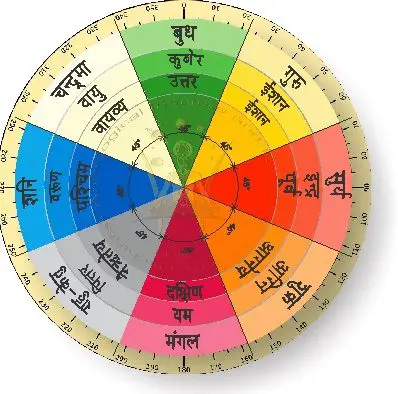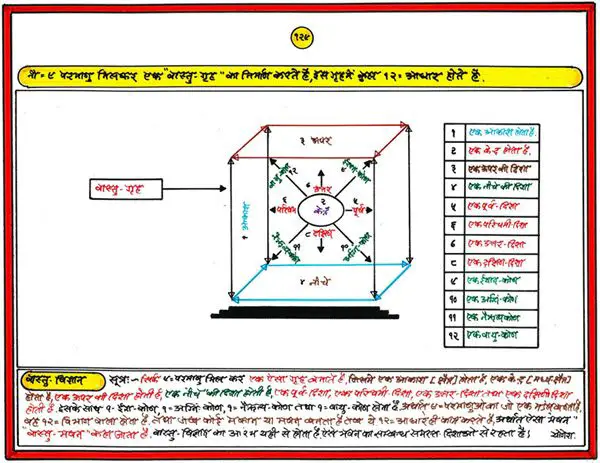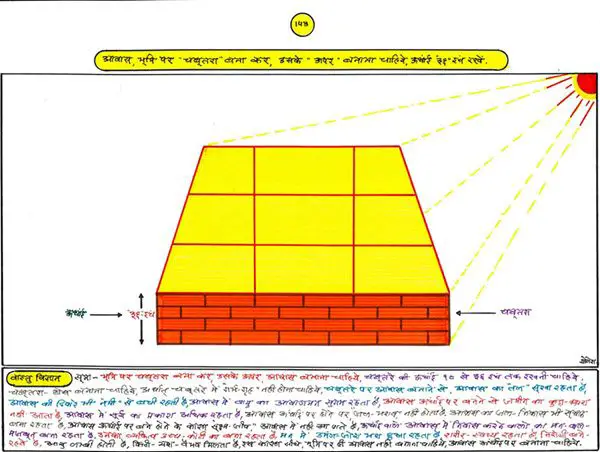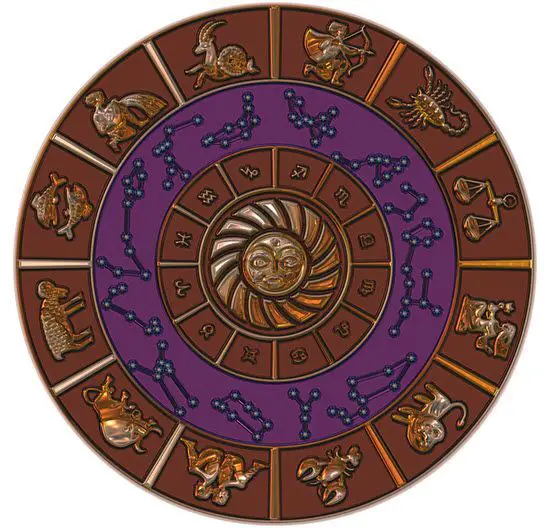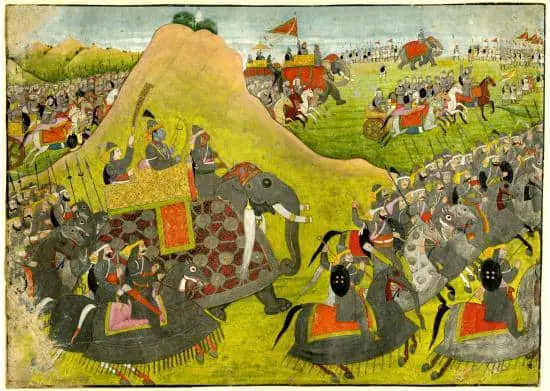Vastu Shastra is the ancient Indian science of architecture that describes how a building should be built so as to channelize positive energies in our lives.
In fact, proper implementation of Vastu techniques is mostly undertaken to bring peace, happiness, and prosperity in households.
Vastu techniques are mainly used to enhance positive energy and eliminate negative vibrations present at a place, so that person(s) inhabiting a building become happy and prosperous.
In simple terms, Vastu Shastra aims to make harmonious buildings in tune with mother-nature so that humans live a balanced and happy life.
Initially, the techniques of Vastu Shastra were used to build Hindu temples. However, it soon branched out and was being used to plan houses, shops, office buildings, sculpture, furniture, paintings, vehicles, etc.
Vastu Shastra incorporates principles of design, measurements, layout, ground preparation, spatial geometry, and space arrangements. It uses traditional Hindu as well as Buddhists beliefs. It basically functions to integrate architecture with nature, utilizing geometrical patterns, symmetry, and directional alignments.
Moreover, Vastu Shastra is the textual part of the broader Vastu Vidya which itself describes the basic principles of architecture and design theories of ancient India. Vastu Shastra takes into account the directions, building material used, and many other minor factors.
Table of Contents
The History of Vastu Shastra
The Indian civilization is one of the oldest in the world and is credited with developing various branches of science. Vastu Shastra is one such branch of science which developed in ancient India by studying the mother-nature.
The ancient scholars knew about the “five elements” that made the universe. They utilized this knowledge in laying down the principles of architecture so that construction of buildings was scientific and spiritual at the same time.
In fact, it is believed that Vastu Shastra evolved during the Vedic era about 10,000 years ago. The science of Vastu Shastra was then transferred to Tibet, South East Asia and finally reached China and Japan where it developed into Feng Shui.
The mention of Vastu Shastra is found in ancient scriptures including the Rig Veda, Atharva Veda, Mahabharata, and Ramayana. The principles of designing and constructing buildings find mention in Sthapatya Veda, which is part of Atharva Veda, one of the four Vedas.
The principles of Vastu were laid down by ancient Sages. It was based on the five basic elements such as Bhoomi (earth), Aakasha (space), Jal (water), Agni (fire), and Vayu (air). These are known as Panch-Maha-Bhuta.
There are evidence of Vastu Shastra during the times of Ramayan and Mahabharata. For instance, the Mayasabha of the Pandavas at Indraprastha in Mahabharata was constructed in accordance with the principles of Vastu Shastra. Similarly, the site plan of Ayodhya, the capital of Lord Ram’s kingdom, was similar to design narrated in Manasara, one of the great architectural texts of the Hindus.
The Story of Birth of Vastu Purusha
Once there was a great war between Lord Shiva and the devil named Andhak. Finally, Lord Shiva killed the devil Andhak. However, a spirit arose out of the perspiration of Lord Shiva which consumed all the blood from the devil’s body. He was not satisfied and undertook penance. Lord Shiva got pleased by the penance and granted him a boon. The spirit then went wild and started killing men and animals.
This disturbed the Gods in heaven. Lord Brahma and 80 other Gods then laid the spirit face down and sat on various parts of its body. The spirit requested Lord Brahma for forgiveness. Hearing the plea, Lord Brahma granted him a boon, saying that those who offer prayers and worship you as Vastu Purusha after building any structure would be blessed with happiness and prosperity. However, he can trouble those who do not offer any prayers to him.
The Five Elements in Vastu Shastra
Vastu Shastra takes into consideration five basic elements of mother-nature in laying down its principles of construction.
These are:
- Air
- Space
- Water
- Earth
- Fire
In fact, according to Hindu beliefs, the entire universe around us is composed of these five basic elements. Moreover, these five elements of nature are closely related to the five elements of the human body as well. When these five elements (of nature and the human body) are in coordination with each other, the human relationship becomes harmonious.
Vastu Shastra makes use of the knowledge of these five elements to plan and construct buildings so that they support human life on earth. This fact alone explains the reason why Vastu Shastra emphasizes to make certain changes in the house or makes it necessary to put certain things in certain places.
Further up, these elements determine how particular directions interact with certain objects or a particular type of people. For example, a person with fire sign should avoid setting up an office in the corner that represents the water corner.
So, Vastu Shastra considers directions, elements of nature, as well personality or element of the dweller.
Directions in Vastu Shastra
Besides the elements, the directions are also considered a very important aspect of the ancient science of Vastu Shastra. So, while constructing a house, you have to make sure that everything is in the right corner. Thus, it is necessary to know about directions in Vastu Shastra to take full advantage of this ancient practice.
Here, we list out eight directions in Vastu Shastra together with their specific characteristics.
East: East represents sunrise and so stands for new beginnings. This direction is particularly good when you have to start something new. Moreover, East is considered as the direction of prosperity. Here, we have listed out certain important aspects related to the East direction that should be kept in mind while constructing a house.
For example:
- The entrance to the house, living room, place of worship, and the study should face the east.
- Kitchen or toilet should not be built in the east.
- East direction should not be more elevated than the west, South West, or North West direction.
- Lockers and treasure boxes should open towards the east in order to promote prosperity.
North: North direction is particularly suited for business people. According to Vastu principles, north direction is auspicious for having offices as it brings luck and prosperity. Moreover, the UV rays of the sun have the least negative effect in the north direction, so it is advisable to have as much open spaces in the northern area as possible. Here, we list out some of the things you should take care to take advantage of northern direction as mentioned in Vastu Shastra:
- Have the office in the northern part of the house or building to derive maximum benefits.
- Have slope or elevation on the north side.
- Do not construct any toilets in the northern part of the house. Also, make sure not to keep garbage bins in the north.
- Do not construct staircases in the north as it is detrimental to financial growth.
- Do not have a kitchen in the northern part of the house.
West: Vastu Shastra puts the west direction as the “most pitiable” direction. It is the direction for more “don’ts” than “does.” In fact, people who have entrances opening in the west direction do not lead a happy life. The west direction is regarded as the direction of women. However, it will not bring complete or big success for women. Moreover, west is the direction where sunsets, so it is not good for new beginnings. One should take care of the following things concerning the west direction:
- West direction is particularly suited for having a staircase or a tank than anything else.
- One can store garbage bins in the west direction of the house.
- One can also build a garage in the western direction of the house.
- The west direction is considered as the second choice for offices, especially within the house.
South: The south is considered quite a contradictory direction. Moreover, there is much fear about this direction. There are many apprehensions about this direction, and it is not sure that this direction works for people or not. For instance, a house having south facing entrance might be successful in initial years, but later money begins to stagnate and eventually start decreasing. So, it is advisable to use south direction in cycles, so as to keep all the ill effects of this direction far away.
Here, we have noted down certain things that you should keep in mind with respect to South direction:
- South direction should be elevated as compared to the rest of the house.
- Have a staircase in the south direction.
- Put a tank or overhead tank in the south direction.
- Kitchen and dining room should not be built in this direction.
- The basement should not be built in the south direction.
North-West: It is the direction that is responsible for interpersonal relationships. It governs the kind of relationships that people have with other members of the family. Here, we list out a few things that you should keep in mind concerning this direction:
- No underground water tank should be built in the north-west part of the house.
- The master bedroom, kitchen, and the dining room should not be built in this direction.
- One should not have a basement in the north-western part of the house.
- No extensions should be built from this direction.
North-East: It is the most auspicious direction and is usually considered as the direction of the God.
- Have open spaces in the north-eastern direction.
- Have a slope in the north-eastern part of the house.
- Try having a street outside the entrance, particularly when the entrance is in the north-east.
South-West: It is considered as the direction of the demons.
- Do not have basements or overhead tanks in the southwestern part of the house.
- Rent out the area of the southwestern part of your house.
South-East: It is the direction of the logical mind.
- It is best to have a kitchen in this direction.
- Electrical instruments such as TV, motors, inverters, batteries, etc. should be placed in the south-eastern part of the room.
- Do not construct a toilet or tank in this direction.
Why is Vastu Shastra so Popular?
Although Vastu Shastra is an ancient Indian science of architecture, it has grown in popularity over the recent years. Nowadays, more and more people are using and appreciating Vastu Shastra. In fact, there are lots of reasons which make this ancient tradition so successful with people.
Most importantly, the use of Vastu Shastra can help to make a person’s life even happier. It endeavors to concentrate positive cosmic energy in people’s lives so that they can lead a happy and successful life.
Moreover, people who have constructed their houses or workplaces according to the rules of Vastu Shastra are experiencing a better and happier life. The principles of Vastu Shastra have helped them to derive full benefits of the cosmic forces to their advantage.
Another reason for the popularity of Vastu Shastra is the fact that it can be used at any point of life to become successful. Moreover, it is not necessary to implement all the rules of Vastu Shastra in constructing a building. However, it is beneficial if one adheres to the rules of Vastu Shastra as much as possible.
Not only this, the benefits of Vastu Shastra is not just confined to a material or physical plane. In most of the cases, the benefits can be experienced on the emotional or spiritual plane, as well. So, implementing Vastu techniques can make people feel good.
Lastly, it is not hard to follow the principles and philosophies of Vastu Shastra either. Mostly they are concerned with the construction and maintenance of houses.
Thus, using Vastu Shastra is a sure shot method to blow all the negativity away from your life. In fact, using Vastu Shastra proves to be a life-changing decision. It opens doors for a happy and blissful life.
How Vastu Shastra affects our lives – Its Benefits
Vastu Shastra affects our lives in various ways.
Here, we list out some of the top benefits of using Vastu Shastra:
Comfort & Strength: Vastu Shastra helps to augment the comfort level in our lives. It endeavors to make our lives peaceful and happier. Moreover, it provides the much needed inner strength to deal with any sort of adverse conditions in one’s life. It instills the mental and physical strength to cope up with traumatic or troublesome time.
Positive Energy: The structures that are built according to Vastu Shastra allow maximum flow of positive energy within the structure. So, a person living in the structure is always filled with positive vibes and does not experience any bad or unfavorable time.
Good Structuring and better use of space: Since Vastu Shastra incorporates the concepts of architecture, using it allows people to make the best use of space. Moreover, the rooms and interiors are designed in such a way to have most out of nature and elements as well. A house that is constructed according to Vastu Shastra has ample living space, good ventilation, with lots of air, and natural light.
Improves one’s personality: Good use of Vastu principles in designing a structure (house) can help to improve one’s personality. It empowers them with mental strength and enhances their relationship with themselves. A person experiences harmony with their inner self.
Improves relationship with other people: Vastu promotes cordial relationship among the persons living inside a structure built using Vastu Shastra principles.
Enhances skills and spiritual knowledge: Vastu Shastra evokes the five elements to create a healthy and enlightened mind. It makes the mind more alert and keeps the dwellers energetic all throughout the day. A healthy and enlightened mind is the root of all happiness. Vastu creates the urge for spiritual knowledge and enhances the skills of the dwellers.
Concluding
So, we see that Vastu Shastra is the easiest way out of achieving a peaceful, happy, and fulfilled life. In fact, Vastu supports us in achieving a life that is full of happiness. As much of our time is spent in buildings be it a house, workplace, or some other structure, it is invariably required to construct them according to principles of Vastu so that we may experience happiness and fulfillment.
So, we should endeavor to follow the principles and techniques of Vastu Shastra to build structures that open doors for a healthy and happy living. Vastu Shastra is the age-old Indian science of architecture that has immense potential in improving our lives for a better tomorrow.


